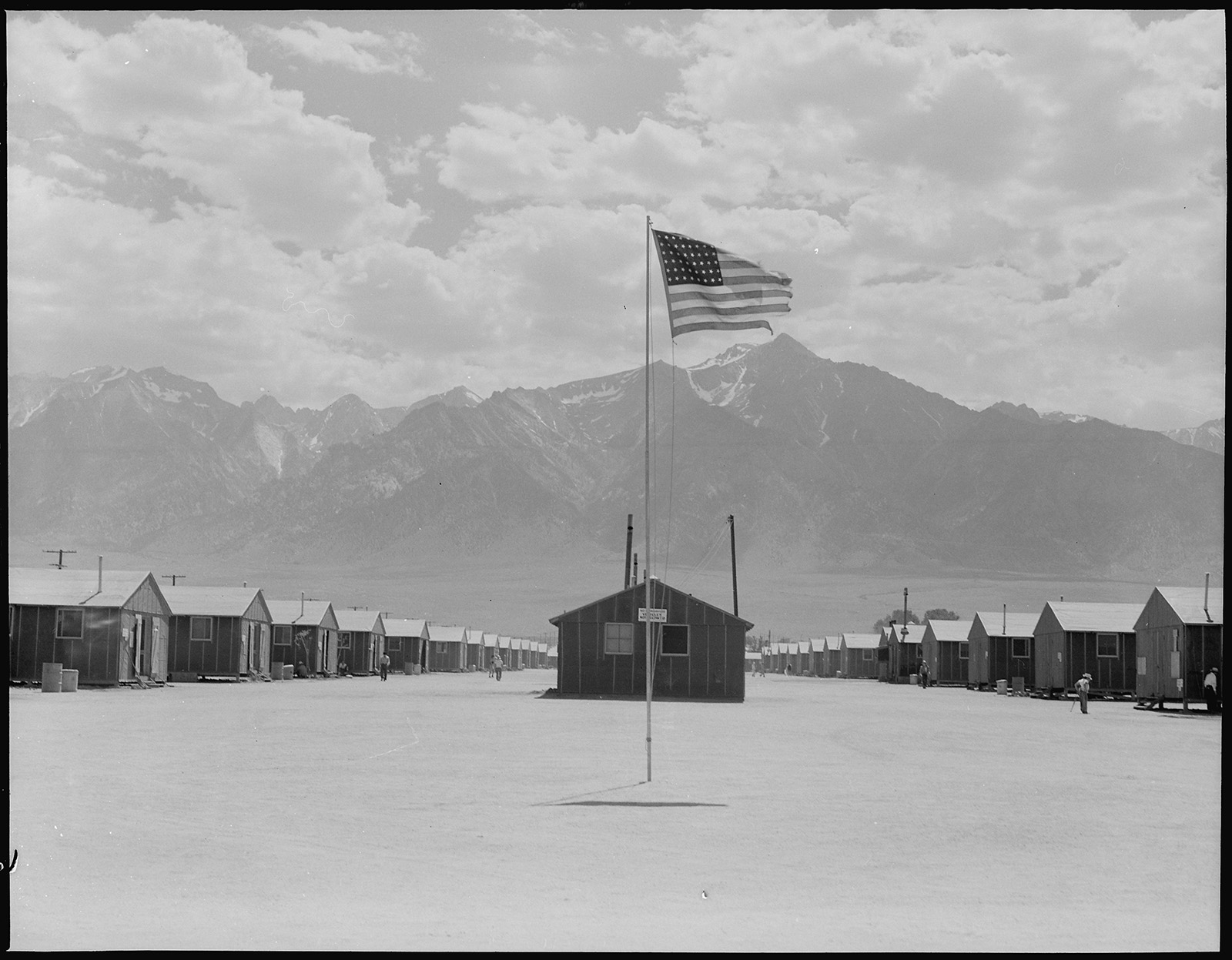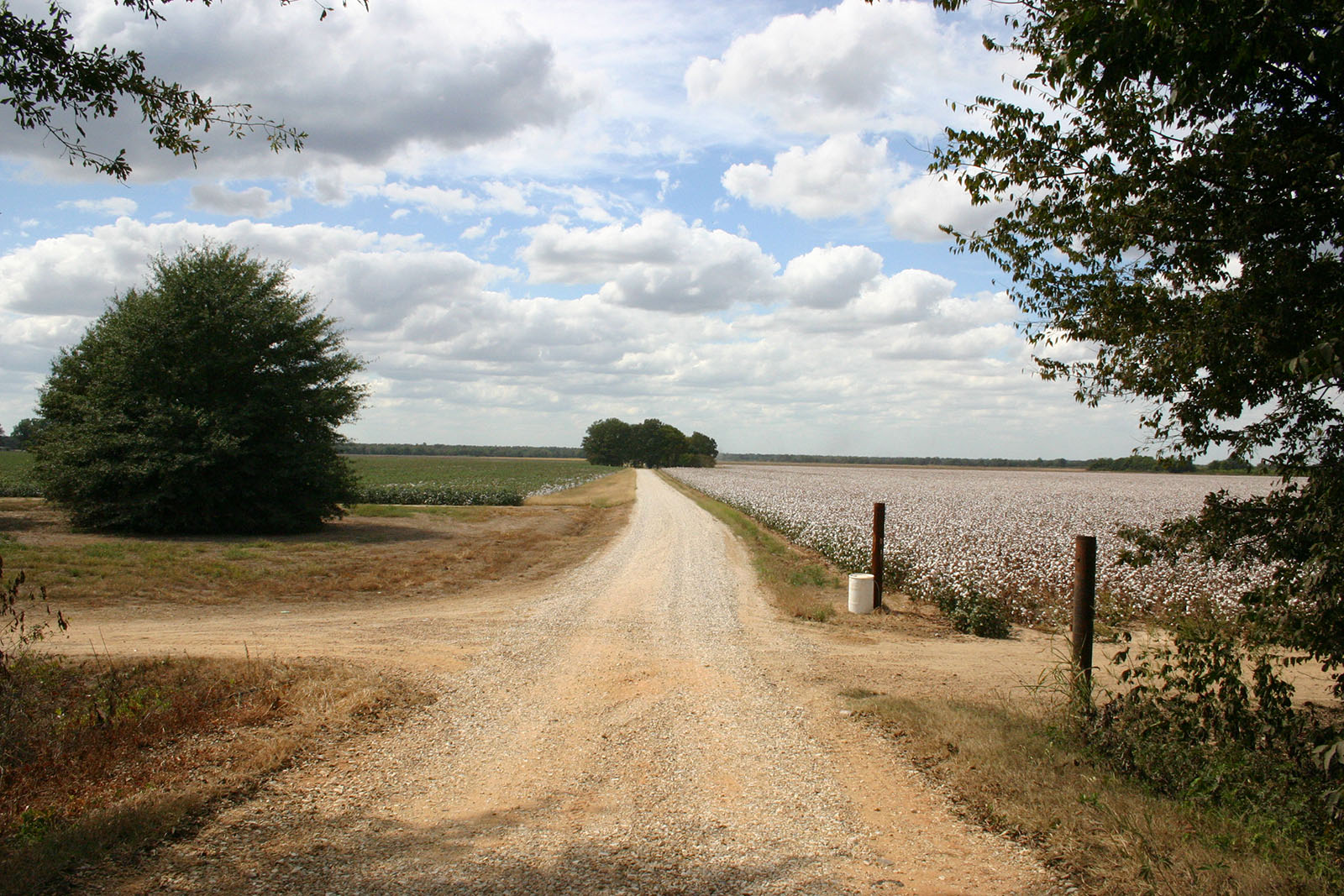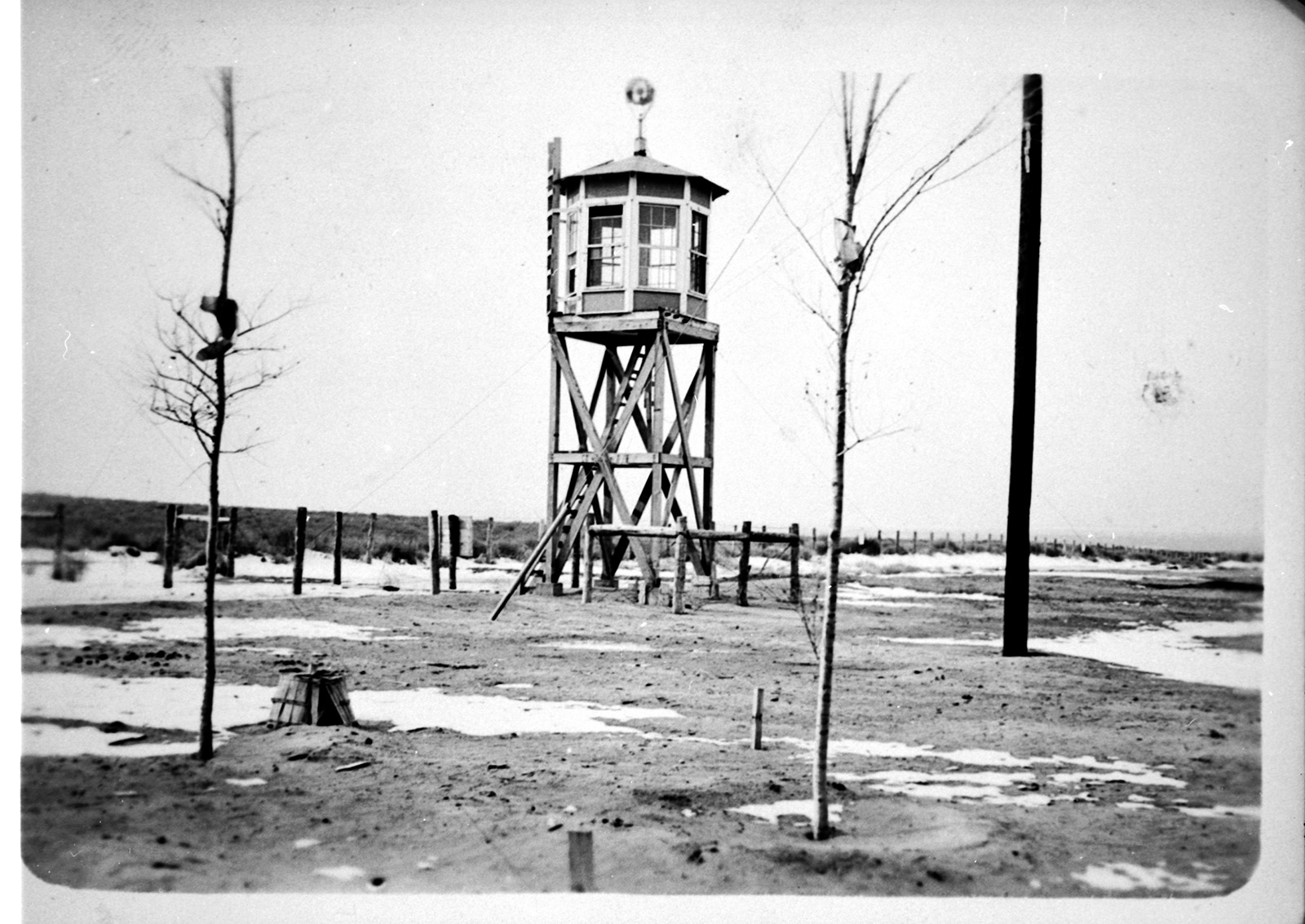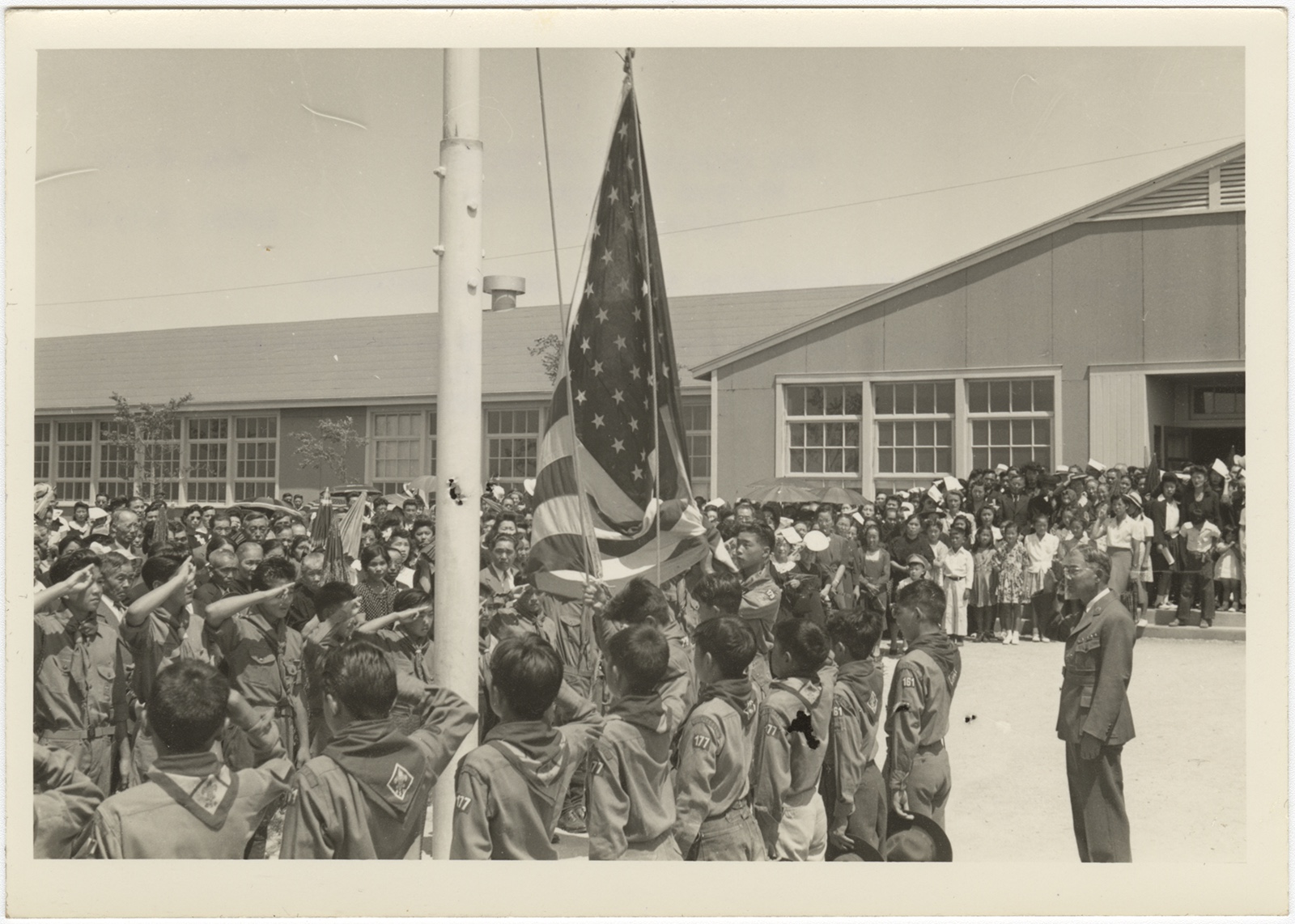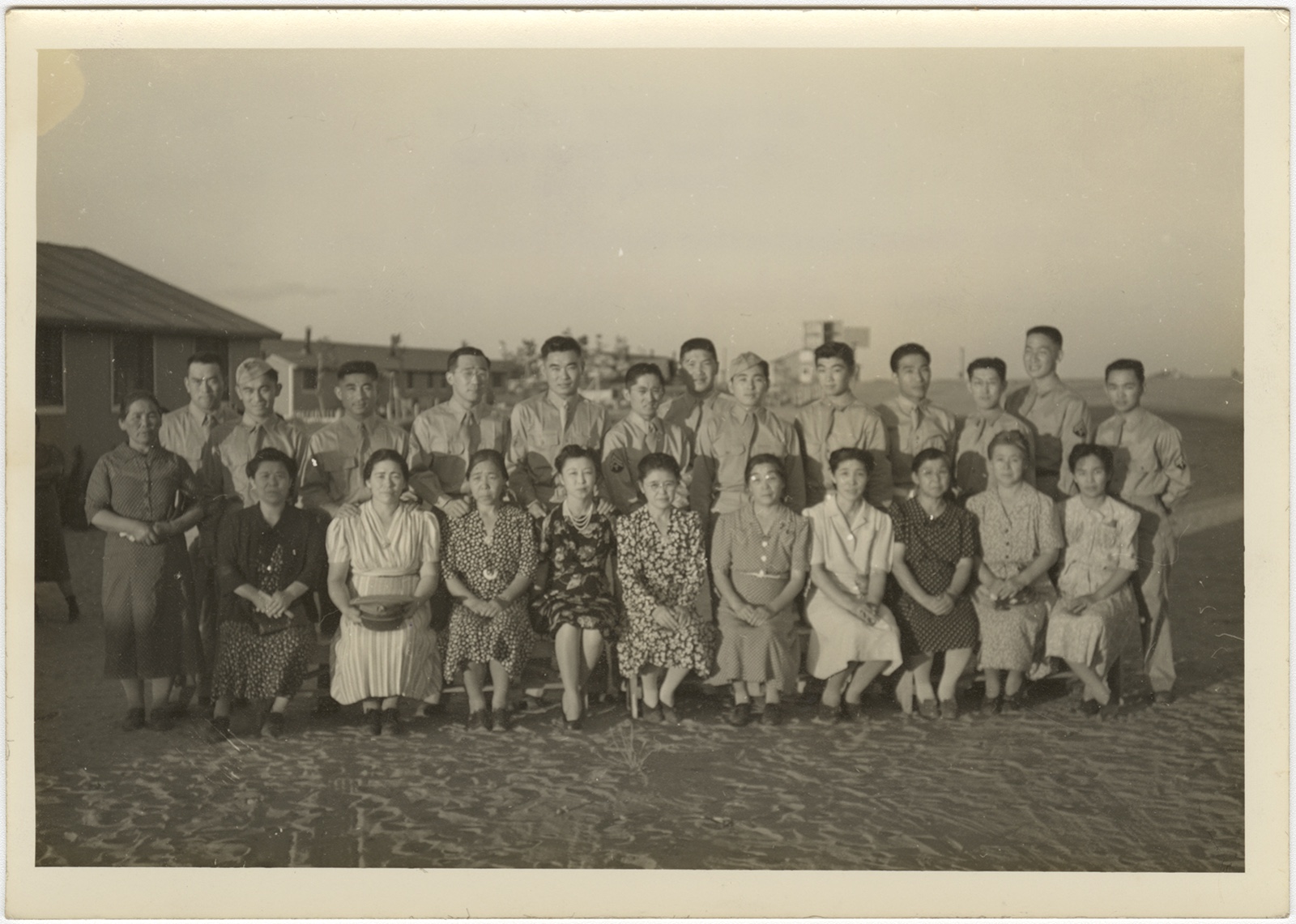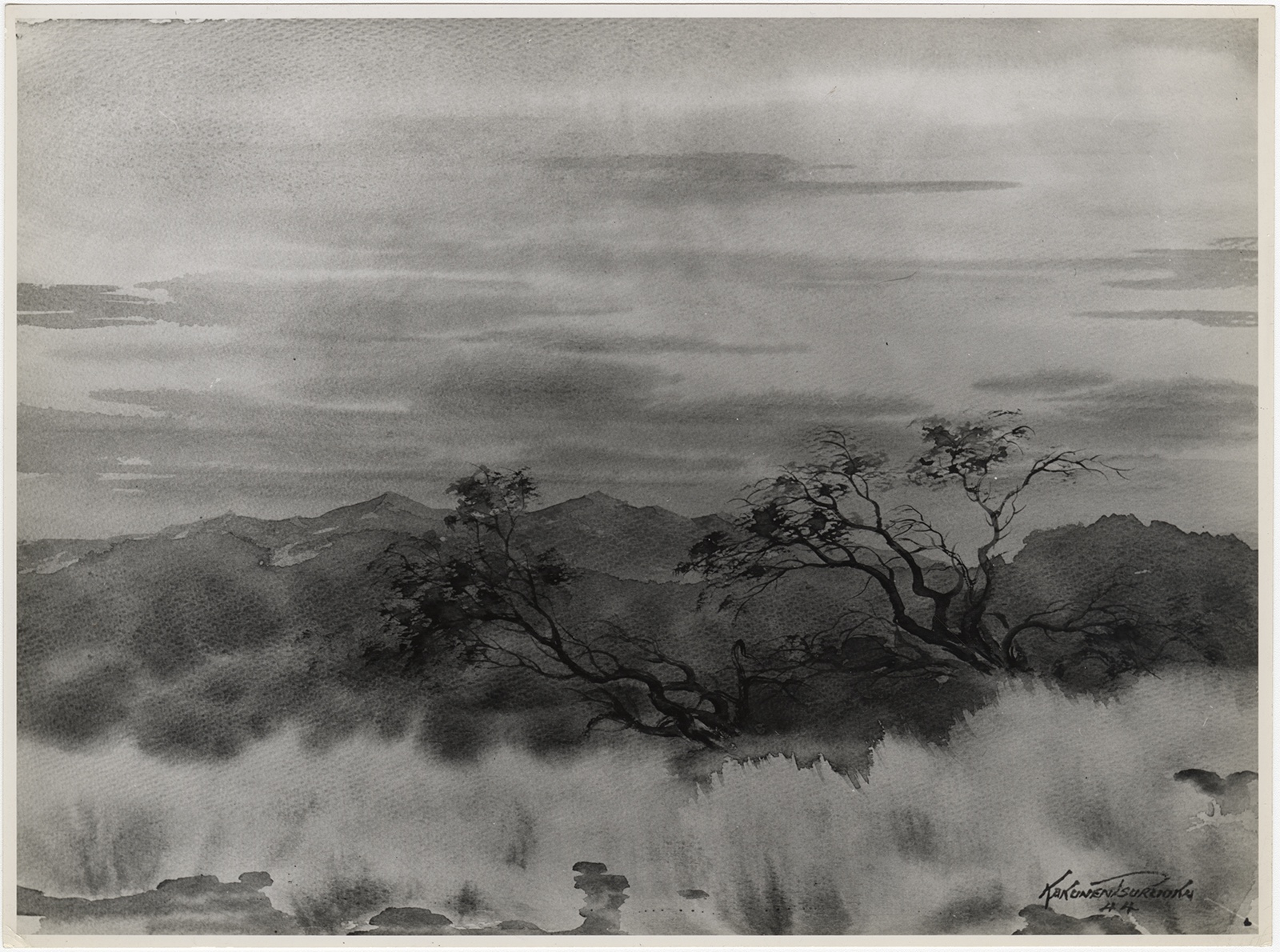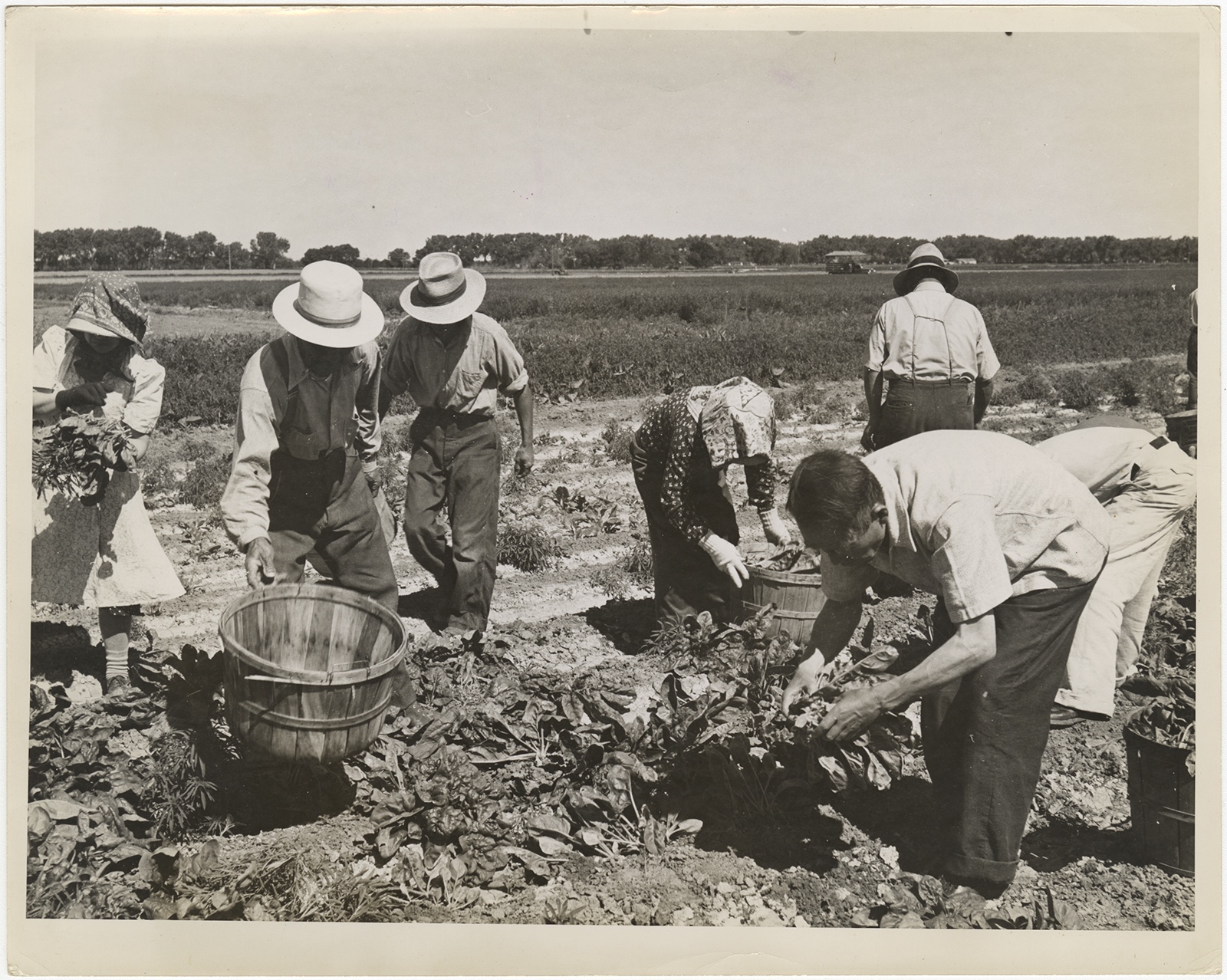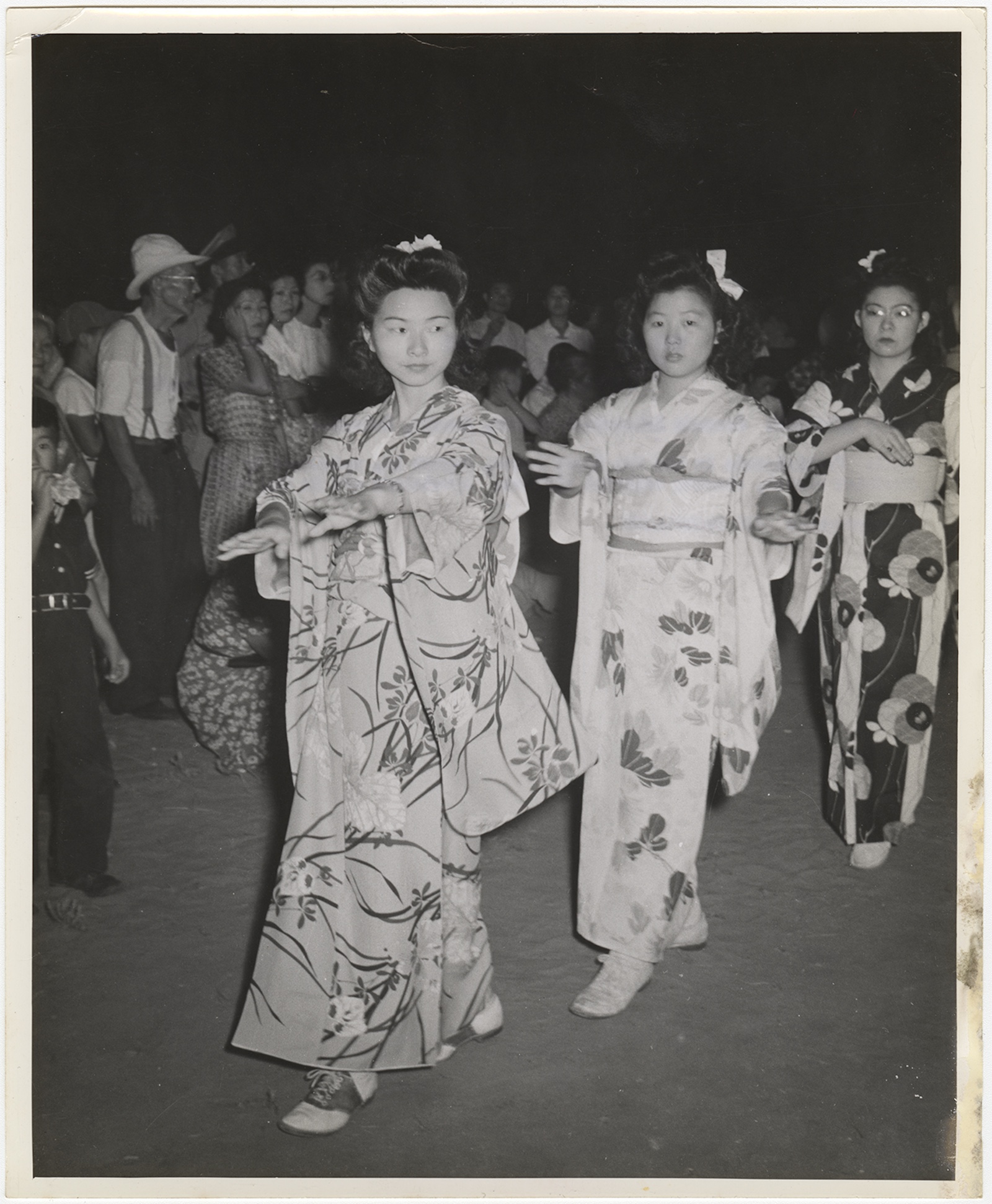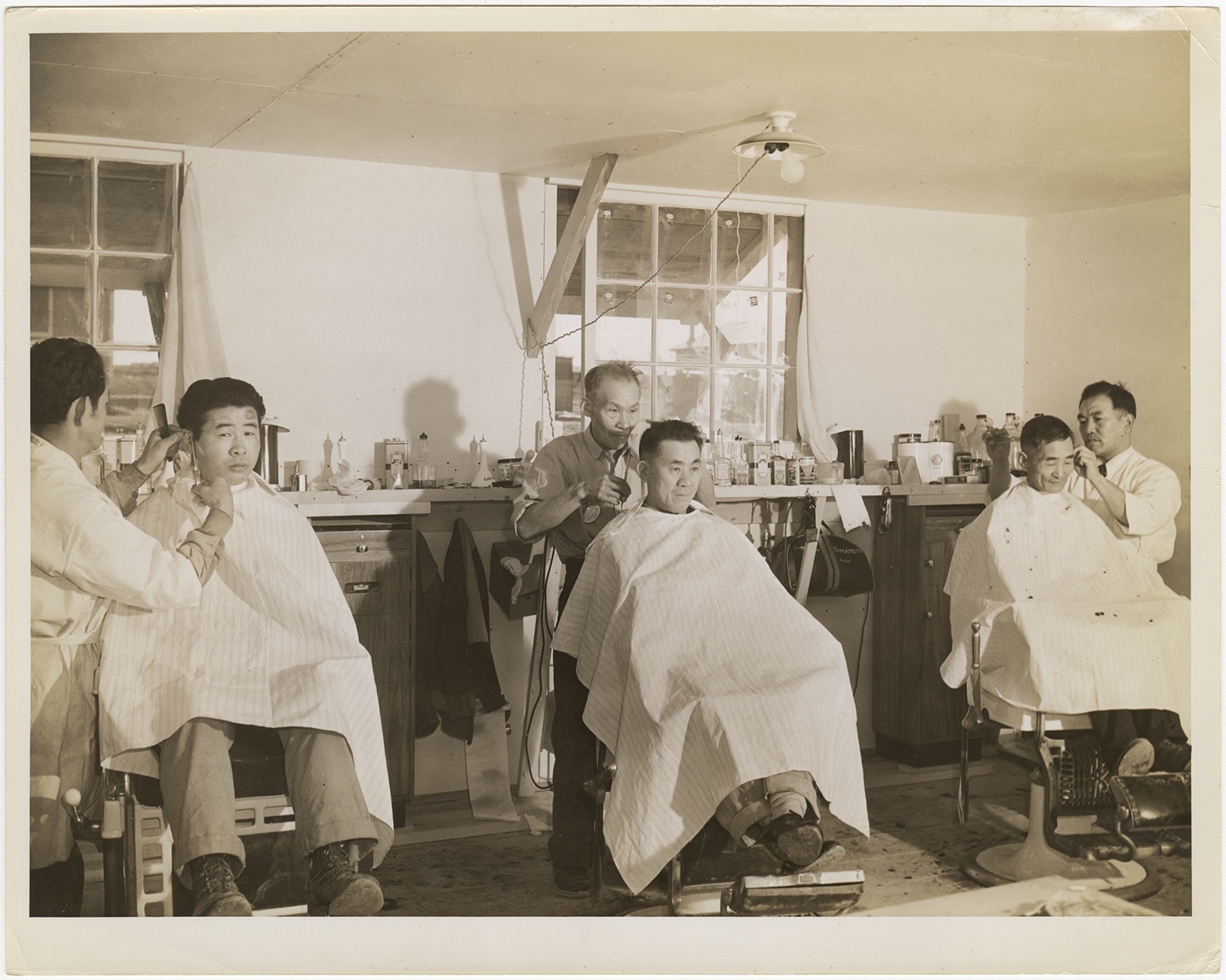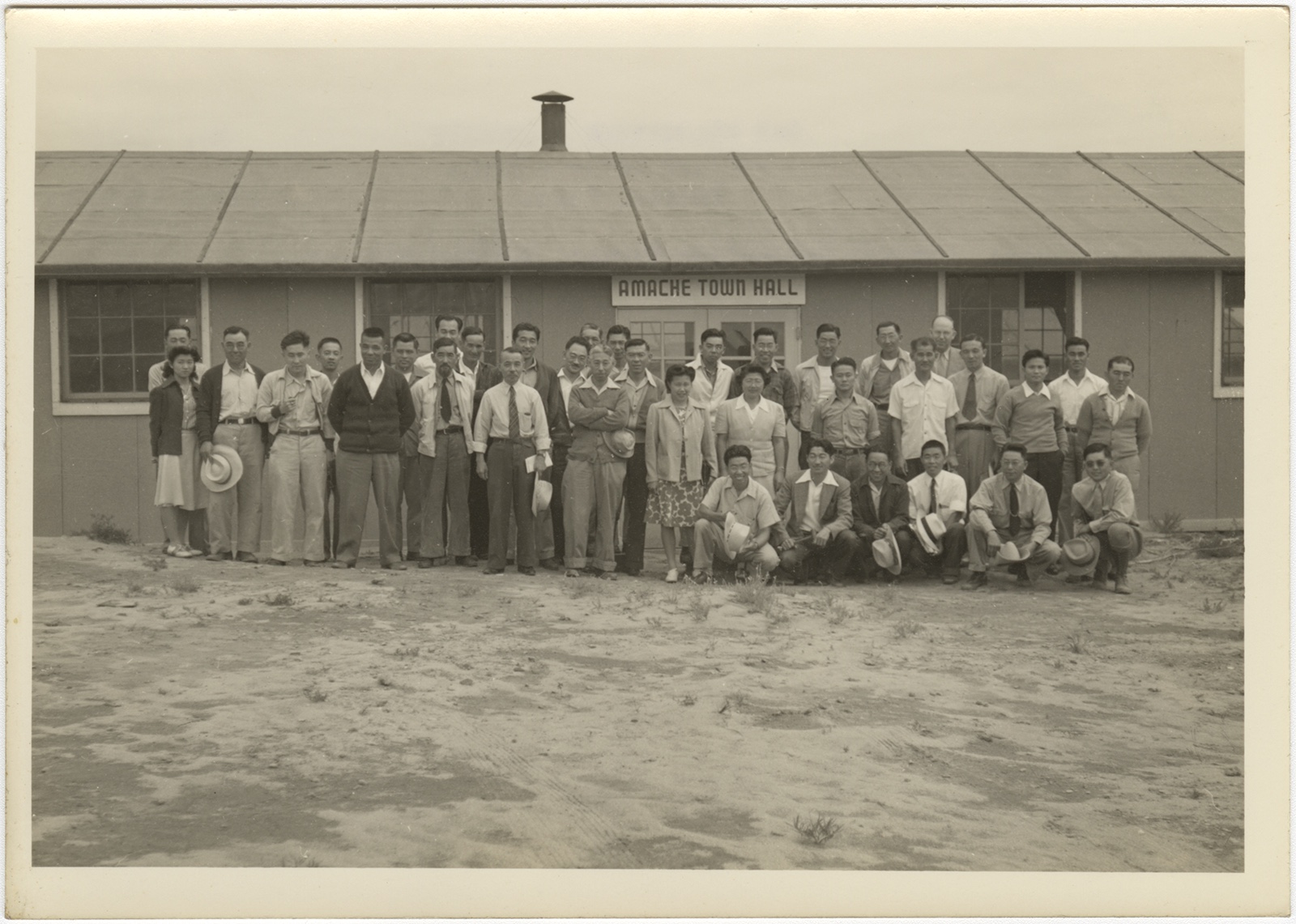Image Credits
Home page:
This image depicts a dust storm at the Manzanar concentration camp in 1942. With the American flag rising over the barracks, it is evocative of the overall story of what happened to 120,000 individuals simply because they looked like the enemy.
Dorothea Lange, Untitled [“Manzanar, California, Dust storm at this War Relocation Authority center where evacuees of Japanese ancestry are spending the duration” (July 3, 1942)], 1942, National Archives and Records Administration (ARC Identifier 538128 / Local Identifier 210-G-C840)
Migration:
This image depicts the modern-day entrance to the Rohwer concentration camp. The dirt road and surrounding cotton fields suggests a sense of going toward the unknown, even when a path is clearly shown. For those of Japanese ancestry in America, the migration to camp during World War II often started a period of movement around the nation for them and their family members.
Entrance to Rohwer, 2004, photograph by Richard M. Murakami, Japanese American National Museum
Security:
This image shows a guard tower at the Amache concentration camp. The armed military police who manned these towers were tasked with securing the perimeter of the camps from outside dangers. However, the guards and guard towers produced feelings among the incarcerated that were the opposite of secure.
Japanese American National Museum, Gift of the Nishizaki Family (94.194.8)
Citizenship:
This image shows Boy Scouts raising the American flag to half-staff at a memorial service for six Japanese American soldiers killed while serving the US Army in Italy during World War II. The photo was taken at the Amache concentration camp in August of 1944. The soldiers were the first from Amache to die in the line of duty. The fact that Japanese Americans still saluted the flag and volunteered to serve in the military showed their willingness to perform the duties of citizenship despite having family members incarcerated in the camps.
Japanese American National Museum (2015.100.196a)
Loyalty:
This image depicts Blue Star mothers and wives at the Amache concentration camp with visiting soldiers. “Blue Star” is still a term that refers to the family members of those on active duty in the US military. Having a family member in military service helped those in camp prove their family’s loyalty.
Japanese American National Museum (2015.100.377a)
Dissent:
This is an image of an artwork made in an unknown concentration camp in 1944. Its dark and murky sky combines with the sparseness of the trees to create a sense of disquiet and portentousness. It evokes unease, a feeling at the root of dissent.
Japanese American National Museum (2015.100.289a)
Identity:
This image depicts Japanese Americans at the Amache concentration camp harvesting spinach they grew to supplement the food supplied by the War Relocation Authority. Many of those incarcerated had a farming background; being able to grow and harvest food allowed them to harken back to their agricultural roots and contribute to the war effort. It also allowed them to return some Japanese vegetables to their diet, which was otherwise dictated by the War Relocation Authority.
Japanese American National Museum (2015.100.315a)
Community & Culture:
This image depicts participants dancing at Obon, a Japanese Buddhist festival commemorating the dead. Even though they were incarcerated at the Amache concentration camp, Japanese Americans continued to celebrate their ancestral culture and foster a sense of community.
Japanese American National Museum (2015.100.267a)
Dignity:
This image shows men at the barbershop at the Amache concentration camp. Even though they were incarcerated and didn’t know how long they would be held, or what might happen to them while imprisoned or afterward, these men maintained their dignity by continuing to care about personal grooming. This was a sign of respect for themselves and the community in which they lived, even if they did not live there by choice.
Japanese American National Museum (2015.100.350a)
Justice & Democracy:
This image shows the Amache Community Council in front of the Town Hall building at the Amache concentration camp. Even as their government incarcerated them without due process, Japanese Americans fought to maintain a sense of justice and democracy. Though much was beyond their control, incarcerated men and women still participated, to the extent they were able to, in democratic systems.
Japanese American National Museum (2015.100.172a)

